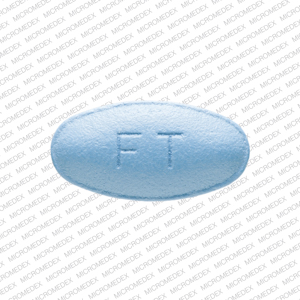Toviaz and Alcohol/Food Interactions
There is 1 alcohol/food/lifestyle interaction with Toviaz (fesoterodine).
Fesoterodine Food/Lifestyle
Moderate Food Interaction
MONITOR: Coadministration with moderate inhibitors of CYP450 3A4 such as grapefruit juice may increase the plasma concentrations of fesoterodine's active metabolite, 5-hydroxymethyl tolterodine, which is partially metabolized by the isoenzyme. The possibility of prolonged and/or increased pharmacologic effects of fesoterodine should be considered. Because 5-hydroxymethyl tolterodine is also metabolized by CYP450 2D6, the clinical significance of the interaction may be greater in patients who are CYP450 2D6-deficient, or so-called poor metabolizers of CYP450 2D6 (approximately 7% of Caucasians and less than 2% of Asians and individuals of African descent) who may rely more on the 3A4 metabolic pathway for clearance of the drug.
MANAGEMENT: Caution is advised if fesoterodine is administered with grapefruit or grapefruit juice. Patients should be advised to notify their physician if they experience potential adverse effects of fesoterodine such as irregular heartbeat, blurry vision, difficulty urinating, dry mouth, headache, drowsiness, dizziness, gastrointestinal upset, or constipation.
References (1)
- (2008) "Product Information. Toviaz (fesoterodine)." Pfizer U.S. Pharmaceuticals Group
Switch to consumer interaction data
Toviaz drug interactions
There are 323 drug interactions with Toviaz (fesoterodine).
Toviaz disease interactions
There are 6 disease interactions with Toviaz (fesoterodine) which include:
- GI retention
- narrow-angle glaucoma
- urinary retention
- hepatic dysfunction
- myasthenia gravis
- renal dysfunction
More about Toviaz (fesoterodine)
- Toviaz consumer information
- Check interactions
- Compare alternatives
- Pricing & coupons
- Reviews (74)
- Drug images
- Side effects
- Dosage information
- During pregnancy
- Generic availability
- FDA approval history
- Drug class: urinary antispasmodics
- Breastfeeding
- En español
Related treatment guides
Drug Interaction Classification
| Highly clinically significant. Avoid combinations; the risk of the interaction outweighs the benefit. | |
| Moderately clinically significant. Usually avoid combinations; use it only under special circumstances. | |
| Minimally clinically significant. Minimize risk; assess risk and consider an alternative drug, take steps to circumvent the interaction risk and/or institute a monitoring plan. | |
| No interaction information available. |
See also:
Further information
Always consult your healthcare provider to ensure the information displayed on this page applies to your personal circumstances.


